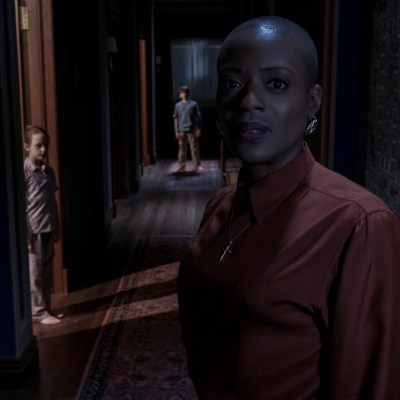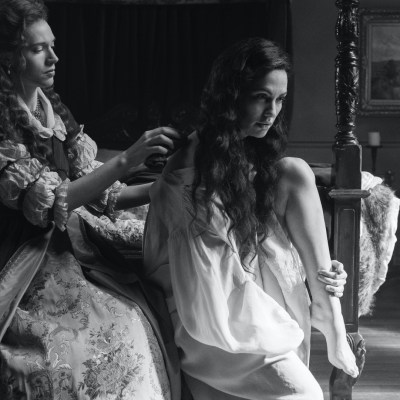How The Haunting of Bly Manor Pays Tribute to 1961’s The Innocents
Netflix’s new version of Henry James' The Turn of the Screw wears its love for Jack Clayton’s 1961 film on its sleeve
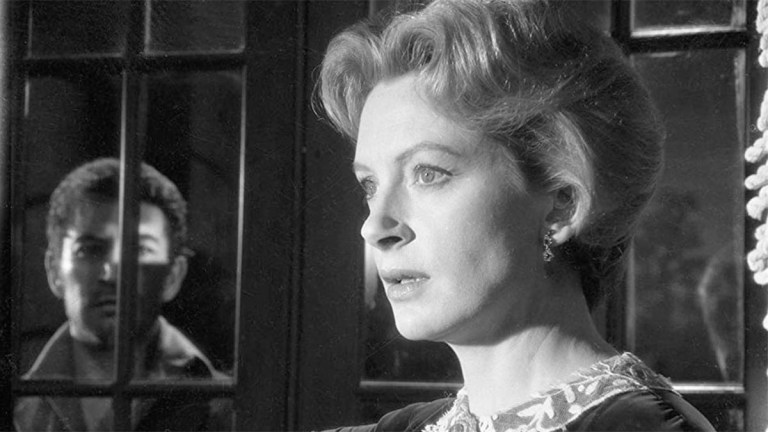
The first day at work for The Haunting of Bly Manor’s writers started with a field trip. Mike Flanagan’s team went out to the Amblin Entertainment screening room to watch a movie. “We did the same thing in [The Haunting of Hill House] with Robert Wise’s The Haunting,” Flanagan tells Den of Geek and other press outlets. “It’s a great way to start … to put up a really beautifully realized adaptation of the same source material, and to start talking to the writers about the things that I love about it and hear the things they love about it.”
For Bly Manor, the version of the same source material chosen was Jack Clayton’s The Innocents, released in 1961 and starring Deborah Kerr. It’s a film that Flanagan wanted to celebrate in his own adaptation of Henry James’ The Turn of the Screw.
“It’s a movie, I think, that isn’t talked about for whatever reason,” says Flanagan. “It doesn’t come up as often as The Haunting does. Though it employs a lot of the same technique and came out two years prior. So, it’s one of those films that cinephiles love and horror fans love, but a lot of people don’t know it. We were actively always looking for ways to tip our hat to it.”
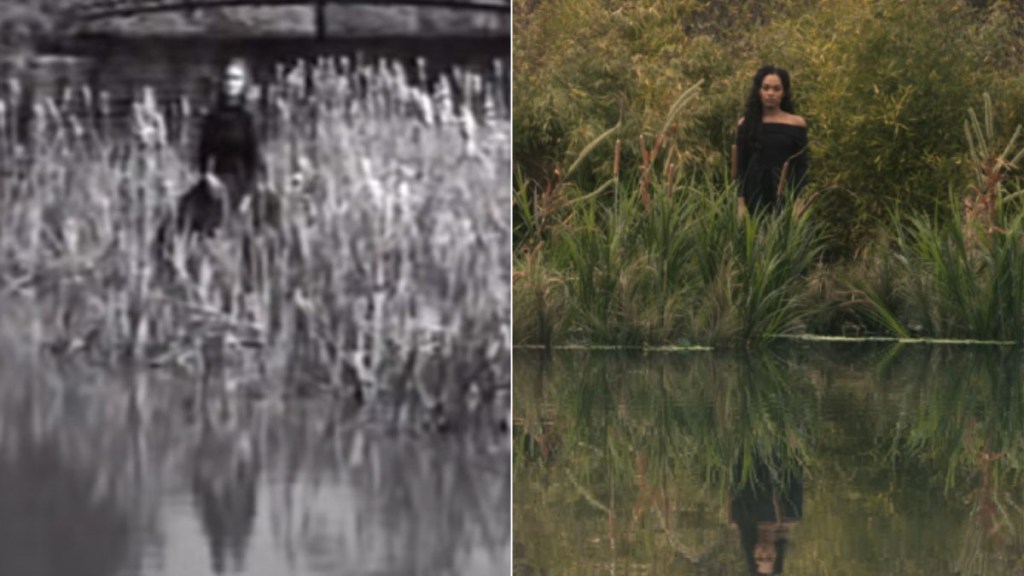
And they found plenty. Though The Innocents cleaves more closely to The Turn of the Screw than Flanagan’s version does (the Netflix series is a mini anthology of James’ work, blending two of the writer’s other stories in with the events of the novella), the 1961 film invented several elements that reappeared in Flanagan’s series. The first is its ‘O Willow Waly’ song motif. The Innocents memorably starts with an entirely dark screen as a child’s voice sings Paul Dehn’s lyrics to a melody by composer George Auric:
We lay my love and I beneath the weeping willow.
But now alone I lie and weep beside the tree.
‘O Willow Waly’ does not feature in The Turn of the Screw and was composed for the 1961 film where it’s heard several times: hummed by young Flora (Pamela Franklin), played on the piano by Miles (Martin Stephens), and as the tune to which a toy ballerina dances inside a musical jewellery box. As a tribute to The Innocents, the Netflix series borrows the same motif. Its opening lines are recited as a poem by the narrator in the very first scene, it’s sung and hummed by Flora a number of times – including when she’s playing hide-and-seek in the attic in the company of one of the faceless ghosts – and is once again the tune to which the toy ballerina dances in Miss Jessel’s jewellery box. That jewellery box (see below), and the photograph of Peter Quint discovered inside it, is another invention of The Innocents borrowed for the Netflix show.
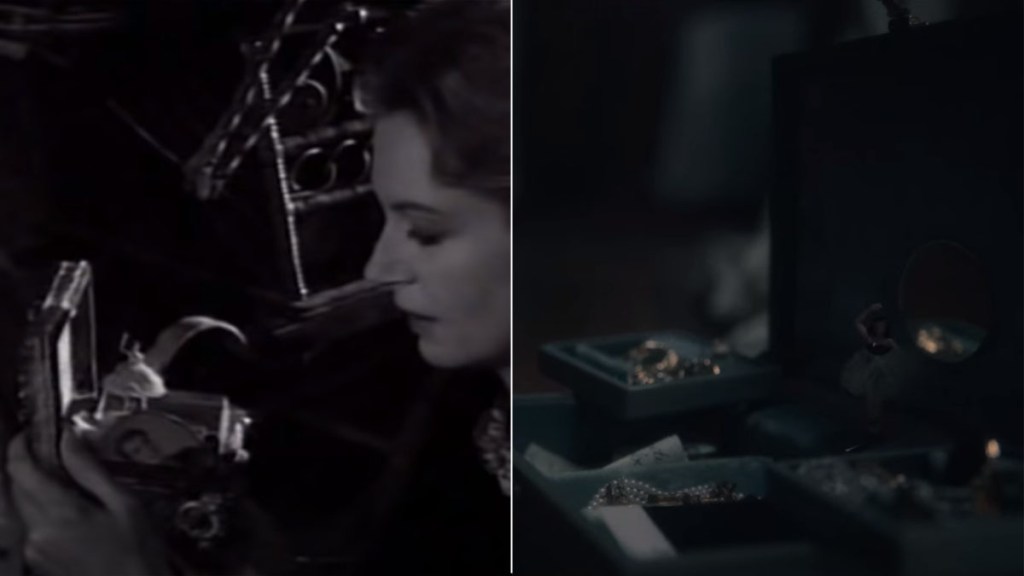
A major tribute comes in the name of Victoria Pedretti’s Bly Manor character. In James’ original novella, the young woman who takes the position at Bly is known only as ‘the Governess’. In The Innocents, the governess character played by Deborah Kerr is called Miss Giddens. And in The Haunting of Bly Manor, she’s Danielle Clayton – her surname a nod to the 1961 film’s director, Jack Clayton.
Flanagan tells press that the hat-tips were meant to go further than character names; he also wanted members of The Innocents cast to cameo in Bly Manor. It’s a trick the team pulled off in The Haunting of Hill House, when actor Russ Tamblyn (who played Luke Sanderson in 1963 film The Haunting) was hired to cameo as Nell Crain’s psychologist Dr Montague.
“We didn’t have the benefit of being able to bring Russ Tamblyn in this time, but we went looking. We went looking for anyone on the cast that we could find from The Innocents to see if we could get them back.” Were they successful? Child actors Pamela Franklin and Mark Stephens appear to be the film’s only two surviving castmembers, the former now running a family-owned bookshop on Sunset Boulevard and the latter now a UK-based architect with his own Ted Talk. If you spot either of them in Bly Manor, be sure to let us know.
Castmembers notwithstanding, there are countless echoes of The Innocents across the Netflix show’s nine episodes. In the novella, the Governess is driven by coach to Bly’s front door, where she’s greeted by housekeeper Mrs Grose holding Flora’s hand. In The Innocents and Bly Manor, she asks the driver to stop early and let her walk the remainder of the way to the house, letting her drink in the paradisiacal grounds and stumble upon Flora playing by the lake. There are other shared links that don’t appear in the original story: The statue garden, Flora’s bath on Dani/Miss Giddens’ first night at Bly, the game of hide-and-seek, the children’s dress-up and ‘story time’ performance, Miles choking Dani/Miss Giddens, Miles killing a dove… (in The Innocents, he kills one of the birds he feeds on the tower and hides its under his pillow; in The Haunting of Bly Manor, he breaks the neck of his teacher’s classroom pet dove). And while it’s never confirmed how Miss Jessel died in The Turning of the Screw, the Netflix series adopts The Innocents’ explanation that she drowned in the house’s lake, following the death of her lover Peter Quint (the circumstances of which are quite different in the Netflix show).
The design of the Netflix series also takes inspiration from The Innocents. In The Turn of the Screw, the Governess first sees the ghost of her predecessor Miss Jessel across the lake when she’s sitting on a bench, sewing, with Flora playing nearby. In the 1961 film, Miss Giddens is sitting in a lakeside Gothic folly when she sees the apparition, and a very similar Gothic folly appears in the Netflix series.

The influence doesn’t stop at sets, props and plot points. The style of filmmaking is carried over from the film to the TV series. The Innocents’ director of photography Freddie Francis made clever use of the sides of the frame to show glimpses of the film’s ghosts. Francis used specially made lenses to blur the edge of shot, in some cases painting directly onto the lens to create a foggy effect with a channel of light in the centre. In this interview, Bly Manor cinematographer James Kniest tells Den of Geek he aimed for the same effect with the ghosts in the series. “They were always meant to be very subtle and not on the nose,” Kniest says. “And that was probably some of our biggest conversations, how bright to light the ghosts in the background and then how to deal with them in post. Sometimes they’re in reflections. Look in the dark corners.”
There are major differences too, of course. With almost nine hours of story versus The Innocents‘ 90 minutes, Bly Manor delves much deeper into Dani’s backstory, and fleshes out the barely mentioned characters of the Manor’s gardener and cook. While the ending of The Innocents is faithful to the final lines of the James story, Bly Manor goes in an altogether different direction.
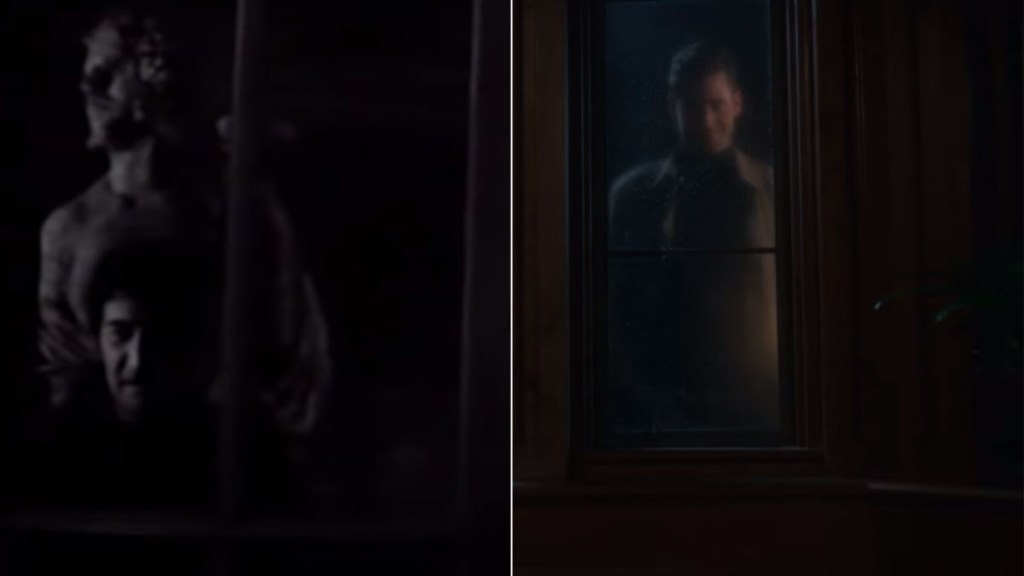
The chief difference though, is Bly Manor’s unambiguous stance on the haunting. There’s no question in the series that the ghosts are real, but Clayton’s film dances beautifully around the ambiguity that Flora and Miles’ possession might only be happening inside Miss Giddens’ head. Revisit the moments in the film in which Miss Giddens sees Quint and Jessell, and almost every time, we first see her face reacting before we see the ghost itself – a suggestion that they only exist in her imagination. Director Jack Clayton was intrigued by the argument made by literary critic Edmund Wilson in his now-famous 1934 essay ‘The Ambiguity of Henry James’ that the original story is not a ghostly tale at all, but a Freudian fantasy in which a frustrated governess projects her repressed sexuality onto the lurid story of two children possessed by lustful adults. According to film historian Sir Christopher Frayling, when Deborah Kerr asked her director if the hauntings were all in Miss Giddens’ head, she was told to make up her own mind.
The Innocents was not adapted directly from James’ novella, but instead from a 1950 stage play by William Archibald that shares the film’s title. Jack Clayton worked with Archibald on the screenplay, and then brought in the successive help of playwrights and screenwriters John Mortimer, Harold Pinter and Truman Capote (with whom Clayton had worked on 1953 John Huston movie Beat the Devil) to fine tune the screenplay. It was Capote who gave the script its Southern Gothic and Freudian elements, says Sir Christopher Frayling in this video essay. The spider eating a butterfly (like the one Miles tries to scare Miss Clayton with in episode one of the Netflix show), the beetle crawling from the mouth of a statue … Capote’s preoccupation in the script, says Frayling, was to reveal “the skull beneath the skin.”
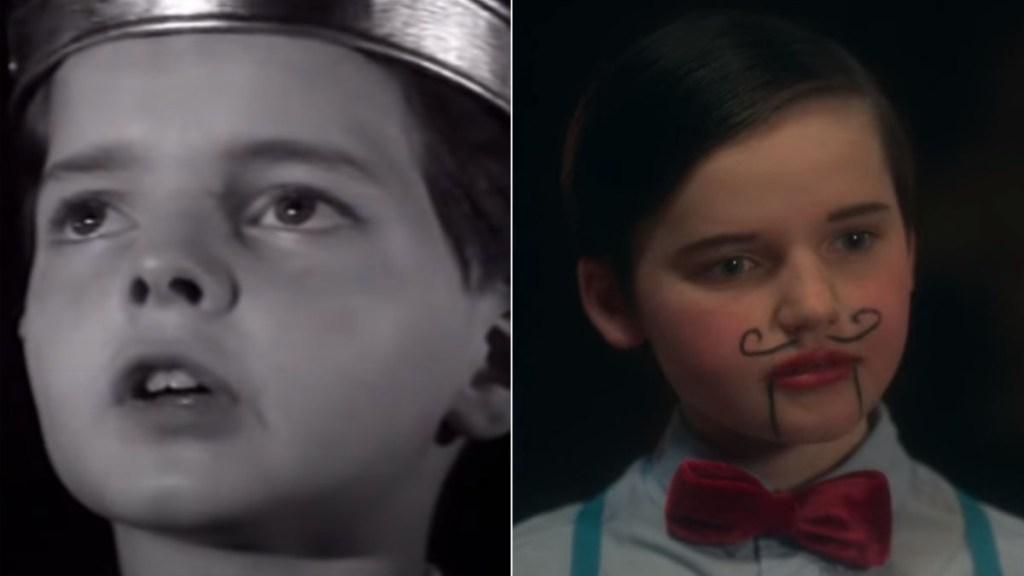
The result is both disturbing and beautiful. Clayton’s film is drenched in a Victorian horror of Peter Quint and Miss Jessel’s sexuality, and doesn’t shy from the novella’s unsettling hints towards the sexual dynamic between the adult Miss Giddens and the child-possessed-by-an-adult Miles. It’s a captivating, intense treatment of a story James himself described as a plaything, or an “amusette to catch those not easily caught”. French New Wave filmmaker Francois Truffaut was a fan, and according to one anecdote, praised The Innocents to its director as the greatest English film since Alfred Hitchcock’s 1938 The Lady Vanishes.
As remarked by Frayling, Clayton coincidentally appears to pay tribute to Hitchcock in The Innocents, visually quoting from 1958’s Vertigo in his shot of the winding staircase leading up to the house’s haunted tower (see below). He also included a nod to Orson Welles’ Citizen Kane in the shot of Miss Giddens leaning over a jigsaw, swamped by the vast stately house, and saluted Jean Cocteau’s 1946 La Belle et la Bête in the house’s ghostly, billowing curtains. Tributes all to the work of filmmakers Clayton admired.
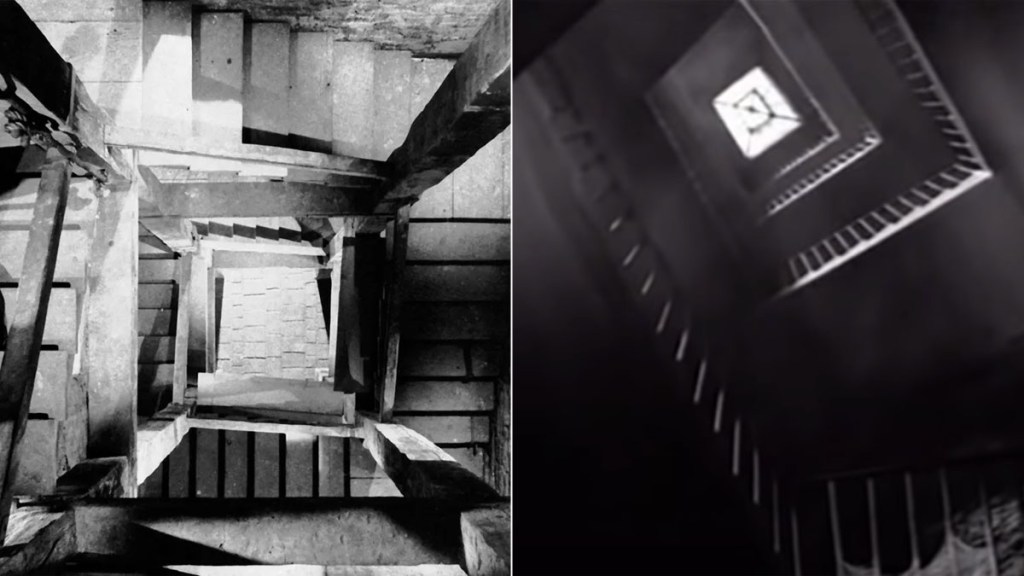
And so the game continues, with Bly Manor saluting Clayton’s work in turn. It’s a secret language, says Mike Flanagan. “One of the coolest things about being people who love movies is that we get to share that with each other, and there’s these little unspoken secret languages we develop just being fans of the same thing. … We’ve created telepathy, just based on our own shared love of something.”
“That to me is what an Easter egg is. It’s the opposite of a dog whistle. It’s a quiet and secret communication that’s meant to just awaken just a little moment of joy in people who see the same thing you see and like the same thing you like, and to invite other people into it.”
The Haunting of Bly Manor is streaming now on Netflix.

